We hope that each of you, our readers, will enjoy and appreciate this article we present about these 4 Fascinating United States Fungi. It was certainly our pleasure to compile the information for you. May it provide you with both education and increased awareness.
These few species listed herein represent only a portion of the natural wonders found throughout the region, though. Yet, it’s our belief that they serve as excellent representations of the wonders found here. Check out some of our other articles for similar marvels.
Rosy Veincap
Rosy Veincap Facts
- Leading off this article about these 4 Fascinating United States Fungi we present the amazing species known as the Rosy Veincap.
- This remarkable variety of fungus most frequently goes by the unique yet descriptive common name we’ve used here. It does have other, less often used titles, though. Those include such interesting terms as wrinkled peach and netted rhodotus.
- Within scientific circles, however, it’s referred to by its technical name. Thankfully for the layperson, that’s a comparatively simple term, as such go. That’s because this product of evolution and Nature bears the official moniker of Rhodotus palmatus.
- The distinctive mushroom received its original name due to the efforts of Jean Baptiste Francois Pierre Bulliard. The noted French botanist recorded the first acknowledgement of it as a separate and distinct species. He managed this is 1785.
- However, later researchers reclassified it a number of different times. Experts eventually reclassified it as the sole member of the genus Rhodotus. The French mycologist, René Maire, most recently placed this marvelous species there in 1926.
- Sadly, though, the gorgeous Rosy Veincap appears to be declining rapidly in numbers. That unfortunate trend further seems to hold true throughout the entirety of its known range. The IUCN therefore currently lists it as Near Threatened on its Red List.
- It presently faces several threats to its continued existence as a species. For the moment, the leading cause of its decline appears to be habitat degradation and outright loss. Understandably, it also now finds itself at risk due to the perils of climate change.
Rosy Veincap Physical Description
The impressive fungi known as the Rosy Veincap captures the attention of most people who encounter it. It does not do so due to sheer physical size, though. That’s true since this marvel of Nature ranks as average-sized for a mushroom. But Nature made up for that.
Nevertheless, its dimensions do bear noting, at least. The stem typically develops between 0.6 – 1.2 in (1.5 – 3 cm) in height. That same part of the structure generally attains a width of 0.16 – 0.24 in (0.4 – 0.6 cm) in thickness. It’s also usually thicker closer to the base.
The cap of the beautiful product of Nature also achieves respectable dimensions. This portion begins formation with a somewhat convex shape. As the individual ages, though, this generally flattens out. It attains an average diameter ranging from 0.8 – 2.4 in (2 – 6 cm).
This same structure of the Rosy Veincap displays yet another appealing characteristic, too. These most commonly roll inward, creating an intriguing pattern. The surface of that cap further tends to develop a network of lightly colored structures called ridges or veins.
It also possesses a texture best described as gelatinous. Its internal flesh develops as relatively firm, though rubbery, as well as light pink in color. The exterior color varies depending on lighting conditions, but usually ranges from red to pink to a salmon-orange.
- Kingdom: Fungi
- Phylum: Basidiomycota
- Class: Agaricomycetes
- Order: Agaricales
- Family: Physalacriaceae
- Genus: Rhodotus
- Species: R. palmatus
Rosy Veincap Distribution, Habitat, and Ecology
Fortunately for it, the Rosy Veincap evolved as native to an extremely wide range of the surface of the earth. In fact, the nature and extent of that range may surprise many people. Examples appear in Europe, Asia, part of Africa, and North America. That’s a wide range!
In Africa, the species only appears in the northern sections of the continent. In North America, it’s been spotted in the eastern sections of both Canada and the United States. It’s presently unknown if it ever appeared anywhere outside this extensive zone of habitation.
The species has shown itself to possess a moderate degree of flexibility in its choice of habitat types. As a general principle, though, it seems to prefer regions that are flooded on a periodic basis. It further prefers these regions to receive only limited amounts of sunlight.
Like many related species, this most frequently consists of areas shaded by forest canopies. The fungi most often grows in small clusters on rotting hardwood trees. While it lives on many trees, it does seem to display a preference for maple, basswood, and especially elm.
Like all fungi, the Rosy Veincap reproduces via spores. In its case, these microscopic structures have a roughly spherical shape. Again following a pattern common to its kind, this natural wonder releases those spores at various times of the day, depending on conditions.
Though not toxic to humans, it’s generally considered inedible. It does, however, show moderate promise in medical research. A research study indicated that it displayed mild to moderate antibacterial effects against several tested bacteria strains in the laboratory.
Bleeding Tooth Fungus
Bleeding Tooth Fungus Facts
- Next up in this collection of 4 Fascinating United States Fungi comes the otherworldy wonder known as the Bleeding Tooth Fungus.
- Just its distinctive name serves as enough to make the remarkable species stand out in the minds of most people. That’s not it’s only name, though. That’s due to the fact that it’s sometimes known by the alternate term of Devil’s Tooth.
- Among scientific professionals it’s best known by its formal name. That’s the hard to pronounce term of Hydnellum peckii. The American mycologist Howard James Baker accomplished the first formal acknowledgement of it as a species in 1913.
- Not surprisingly, the intriguing work of Nature also remains inedible to both humans and other animals. The astonishing fungus actually isn’t toxic, though. Its lack of edibility simply stems from what’s been called an extremely bitter taste.
- In fact, that bitterness even persists after the mushroom has been dried. Yet its appearance doubtless remains its main detractor. In addition to its sheer appearance, it remains notable for a somewhat different physical structure.
- Despite its generally repugnant appearance, the Bleeding Tooth Fungus does have its usefulness. It, and also related species, has value to those who extract dyes from mushrooms. In its case, these usually consist of blue, green, and beige.
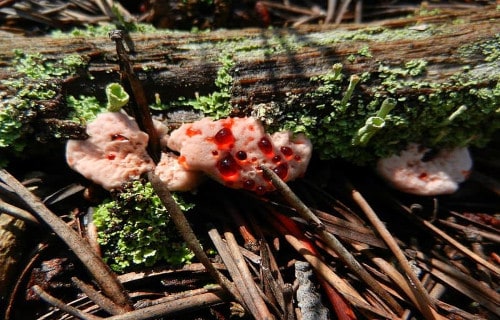
Bleeding Tooth Fungus Physical Description
Most notably, only the emotional shock, and for some, revulsion, at the appearance of the Bleeding Tooth Fungus qualifies as large. The remarkable mushroom itself actually ranks as an approximately average-sized specimen of its kind.
The body of the incredible fungus typically reaches heights measuring about 4.1 in (10.5 cm). At the top of each specimen, a quite irregular-shaped cap forms. This may be as much as 8 in (20 cm) across, but most commonly remains somewhat smaller.
This feature generally begins as a comparatively dark, off-white color. However, as this part of the fungus ages, this changes. That part of the fungus then becomes light brown, with darker blotches. But inside, the flesh itself appears as a light brownish-pink.
One of its most extraordinary features is the viscous liquid young specimens exude when moist. This has a dark red pigment, producing the appearance of actually bleeding. This therefore serves as the source of the common name of Bleeding Tooth Fungus.
- Kingdom: Fungi
- Phylum: Ascomycota
- Class: Agaricomycetes
- Order: Thelephorales
- Family: Bankeraceae
- Genus: Hydnellum
- Species: H. peckii
Bleeding Tooth Fungus Distribution, Habitat, and Ecology
Remarkably, the awesome Bleeding Tooth Fungus evolved as native to an extremely wide distribution. It appears to be most prevalent throughout the United States, in North America, however. There, its largest concentration grows in the Pacific Northwest.
Yet, this remarkable species also appears across a wide swathe of Europe, though in scattered concentrations. But sadly, its numbers in this part of the globe seem to be dwindling in the central sections. Some believe increased pollution to be the culprit.
Wherever it grows, however, the Bleeding Tooth Fungus typically prefers a specific habitat. It develops on the ground, almost exclusively under various types of conifers. This occurs due to the fact that it evolved a close relationship with such trees.
The mushroom also seems to have a distinct preference for either mountainous or sub-alpine habitats. Therein, the unique marvel thrives best among mosses and accumulated piles of pine needles. It also typically develops under the shade of the canopy.
Indigo Milk Cap
Indigo Milk Cap Facts
- Our next choice for inclusion in this gathering of 4 Fascinating United States Fungi holds the descriptive title of the Indigo Milk Cap.
- Most frequently known by this highly colorful common name, this brilliantly shaded mushroom easily dazzles the eye. It also has several other general names, though. These alternate terms include the blue milk mushroom and indigo lactarius.
- Scientific professionals, however, typically refer to the fungus by its official scientific name. That’s the relatively simple term, as such things go, of the Lactarius indigo. Regardless of which term one chooses to employ, though, it’s a marvel of evolution.
- The remarkable species received its present name at the hands of the respected German-American mycologist, Lewis David de Schweinitz. This noted researcher assigned it the term it’s now known by as a result of reclassification. This he did in 1838.
- The first known recognition of it as a separate and distinct species, however, took place in the year 1822. The same renowned researcher that later changed the name due to reclassification also made the first formal acknowledgement of the incredible fungus.
- The intriguing Indigo Milk Cap appears to be maintaining a population base that’s both sizeable and stable. This further seems to hold true throughout the entirety of its natural range. The IUCN therefore has no listing for it on the organization’s Red List.
- Nevertheless, that status could change in the near future. That’s because, like most species, it now faces several threats to its continued existence. Habitat loss naturally poses a danger. It’s greatest threat, though, likely consists of the peril of climate change.
Indigo Milk Cap Physical Description
The visually distinctive Indigo Milk Cap quickly draws the attention of all those who encounter it. It does so for several reasons, though, not just because of its remarkable coloring. This marvelous fungus is truly an impressive creation of Nature and evolution.
For starters, the brightly shaded mushroom varies in size, frequently significantly, like most of its kind. That’s due to a wide a variety of reasons, including local environmental factors. Most specimens, however, attain a cap diameter of between 2 – 6 in (5 – 15 cm).
The stem of this marvel of the world of mycology, meanwhile, ranges from 0.8 – 3 in (2 – 8 cm) in height. The thickness of this portion of the species further varies. This measurement itself ranges from 0.4 – 1. in (1 – 2.5 cm). This usually provides it with a stable base.
The edges of the cap also roll under as the fungus matures. It shares this trait with other members of its genus. The mushroom also shares the characteristic that serves as part of its name. That’s because, if the flesh is damaged, a milk-like substances slowly oozes out.
Yet it’s the coloring of the Indigo Milk Cap tht garners the most attention. That’s due to the fact that this presents as a brilliant shade of indigo blue. Even the aforementioned milky substance within it shows the same shade! This slowly changes to green in air, however.
- Kingdom: Fungi
- Phylum: Basidiomycota
- Class: Agaricomycetes
- Order: Russulales
- Family: Russulaceae
- Genus: Lactarius
- Species: L. indigo
Indigo Milk Cap Distribution, Habitat, and Ecology
Fortunately, both for the Indigo Milk Cap itself, as well as those of us who appreciate Nature, the mushroom has an extremely large range of habitation. That’s because it inhabits certain portions of the continents of North America, Central America, Asia, and Europe.
In Europe, it’s only known to appear in southern France. In Asia, though, it lives in both China and India. Meanwhile, in Central America, the fungus is known to inhabit Costa Rica, Guatemala, and Colombia. Elsewhere, it thrives in the southern and eastern United States.
There, the majority of specimens of this impressive fungus develop from along the Gulf Coast of the United States, to the Appalachian Mountains. There, however, its population concentrations become somewhat scarce. Small groupings do appear elsewhere, though.
All regions in which it makes its home, though, share various natural attributes, of course. Chief among these is the presence of sufficient moisture. Warm temperatures represent another factor. Common locations include damp forests, frequently of pine or oak.
Much like many of its relatives, the intriguing Indigo Milk Cap evolved a mutualistic relationship with certain species of plants. These include pine and oak, thus explaining its preference for forests containing a high ratio of such species. It mainly thrives on the roots.
There, the mushroom extracts fixed carbon from its host tree. In exchange, however, the tree itself benefits. That’s due to the quantities of various amino acids and minerals the fungus removes from the surrounding soil. These it feeds to the host, ensuring mutual survival.
Amethyst Deceiver
Amethyst Deceiver Facts
- Closing out this compendium of these 4 Fascinating United States Fungi we give you the impressive product of Nature named the Amethyst Deceiver.
- The picturesque and descriptive term applied here serves as the generally accepted common name for a remarkable variety of mushroom. Its scientific name, however, remains the difficult to pronounce Laccaria amethystina.
- By either of these names, though, it’s a fungus with what some people humorously consider to be a psychological problem. That would be a confusing personality. That’s due to the fact that this marvel of Nature actually changes its color as it ages.
- As a result of this trait, it can sometimes be difficult to identify. This also serves as the source of the common name. The first scientific description of it occurred in 1778, as a result of the work of the respected English botanist William Hudson.
- Although it does appear in the Catalogue of Life, the IUCN currently has no listing for the Amethyst Deceiver. The fungus nonetheless faces several threats to its existence. Its greatest threat, though, likely comes in the form of climate change.
Amethyst Deceiver Physical Description
While this remarkable species understandably impresses many people, the Amethyst Deceiver does not do so due to physical size. Regardless of its many other wonderful qualities, this wonder of evolution only ranks as an average-sized form of mushroom.
Its stem, which develops as quite fibrous, as well as hollow, generally attains a maximum height of about 2.76 in (7 cm). The cap of the fungus, meanwhile, typically grows to around 2.25 in (6 cm) in diameter, and boats a small depression in the center.
Overall, the Amethyst Deceiver begins its life with a comparatively concave structure. This, however, flattens out with age. In color, the stem usually displays a lighter shade, closer to lilac. The cap, though, displays the famous purple, but it lightens as it ages.
The great majority of individual specimens also display a fascinating pattern of striations. These most commonly appear along the edges of the cap, and display an even paler shade. Its interior flesh possesses neither a discernible scent or color.
- Kingdom: Fungi
- Phylum: Basidiomycota
- Class: Agaricomycetes
- Order: Agaricales
- Family: Hydnangiaceae
- Genus: Laccaria
- Species: L. amethystina
Amethyst Deceiver Distribution, Habitat, and Ecology
Quite fortunately, the Amethyst Deceiver evolved as native to a surprisingly wide swathe of the world. In point of fact, it appears in specific regions of Asia, Europe, North America, and South America. The majority of populations appear in northern regions, though.
It also shows a remarkable versatility in terms of its habitat type. That’s due to the fact that it appears in both deciduous and coniferous forests. The species, does, though, display a pronounced preference for temperate zones within this same geographical range.
Even more amazingly, a minor mystery presently exists regarding its most common choice of habitat. For reasons that still mystify researchers, most specimens appear in the immediate vicinity of certain types of trees. These consist of both beech and oak trees.
As with all mushrooms, the Amethyst Deceiver reproduces via spores. In its case, though, these develop as relatively large in size. It remains undetermined if this fact accounts for its tendency to appear only singly or in small groupings in any one location.
Though not commonly consumed, since most consider its flesh tasteless, it nonetheless remains edible, but only technically. This confusing state exists due to a surprising fact. Most often, individual specimens actually qualify as relatively toxic in nature.
Its own genetic structure contains no known toxic compounds. However, it also remains extremely sensitive to any naturally occurring arsenic in the soil in which it appears. When this is present, the mushroom absorbs it into its flesh, rendering it toxic as well.
4 Fascinating United States Fungi
We hope that each of you enjoyed reading, and hopefully learning from, this article we’ve written about these 4 Fascinating United States Fungi. It’s also our hope that doing so has left you with either a new or renewed appreciation for such wonders of Nature.
Unfortunately, however, many of their kindred around the world now find themselves facing strong threats to their continued existence as a species. Many of those dangers, in fact, stem from the actions of mankind. We must do all we can to protect and preserve them all.
Check out our other articles on 5 Marvelous Mediterranean Sea Species, The Mighty Tornado, 3 Magnificent Manatees, Wonderful Wild Cats of the World
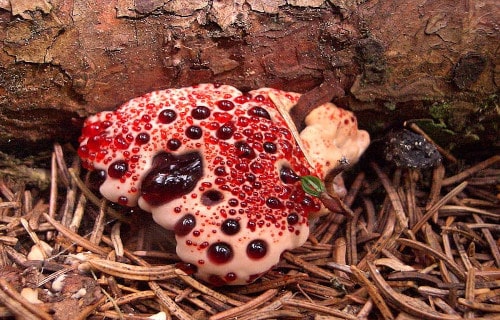
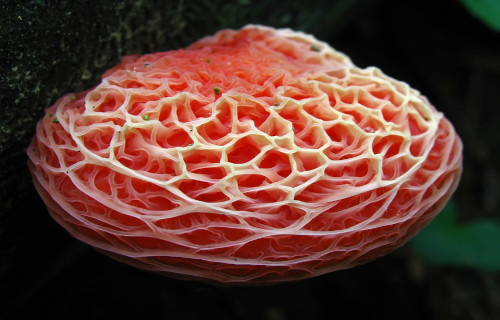
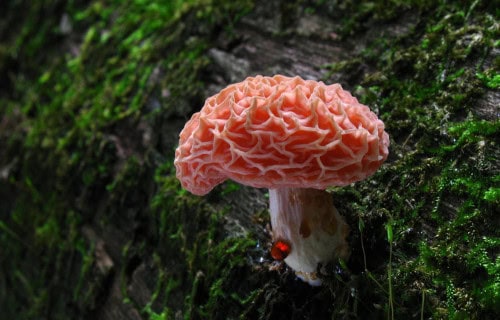
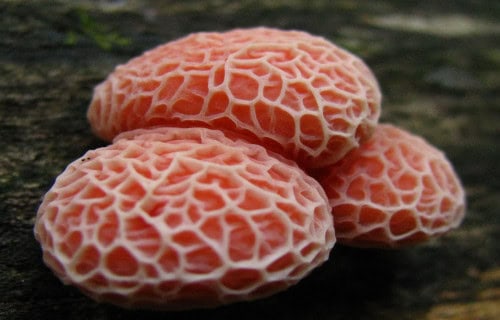
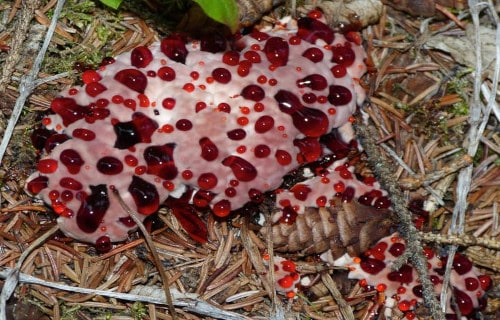
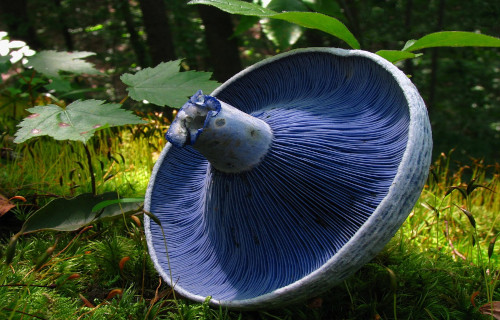
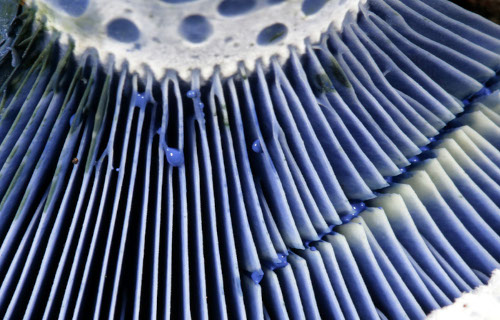
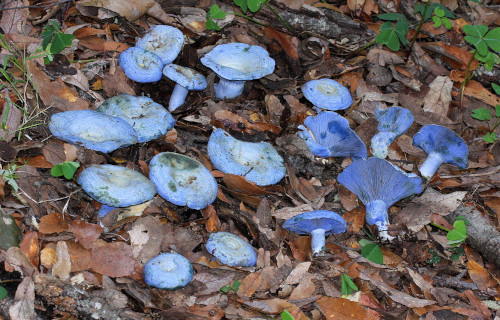
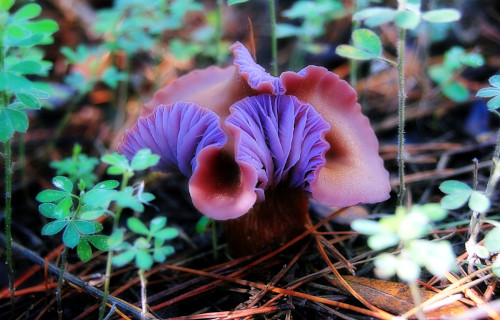
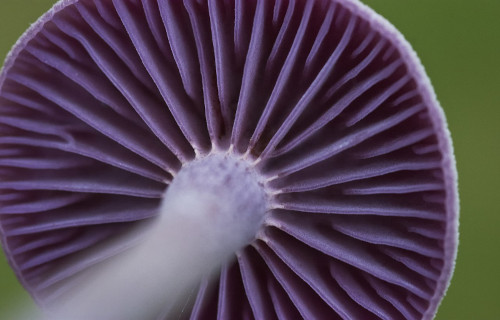
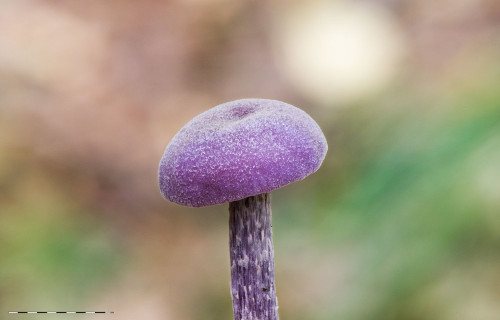









Leave a Reply